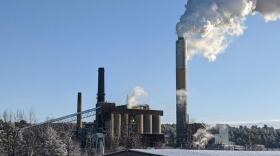Energy leaders from around New England met in Manchester Friday to brainstorm how to keep the region’s lights on at a reasonable price long-term.
Gordon van Welie is CEO of the six-state region’s nonprofit grid operator, known as ISO-New England.
He highlighted ISO’s recent finding that rolling blackouts could occur without a more stable winter fuel supply, and “with the wrong sequence of events playing out in New England in the next five or six years.”
“It’s not the same thing as a complete collapse of the system,” van Welie says. “This’ll be controlled – it’d be rationing of electricity, is what it comes down to, under winter conditions.”
Preventing that, he says, will probably mean extending the life of aging power plants and building more natural gas pipelines – all while transitioning to large-scale renewable sources.
Van Welie says ISO has begun asking federal regulators for a series of changes to make all of that easier.
But he says other stakeholders will still need to come up with long-term solutions to make sure those changes don’t impact costs for the power sector and for ratepayers too much.
Katie Dykes chairs Connecticut's public utilities authority, as well as the board of the Regional Greenhouse Gas Initiative. She says New England may disagree on its energy policies, but it’ll need to find common ground to contribute to that effort.
"It's not productive, if we want to get to a solution, to say, 'Well, state investments in renewables is making this problem worse,' or, 'States not wanting to do gas pipelines is going to create this reliability Armageddon for us,’” Dykes says.
“We just have to look at, well, what are states investing in, and what are ratepayers interested in, and what are people willing to site, and how much of that is helping with this problem?” she says. “And we have to do that yesterday.”
New Hampshire's new 10-year energy strategy does criticize neighboring states' subsidies for renewables. It also prioritizes keeping assets such as Seabrook Nuclear Power Plant online, and more quickly siting new infrastructure – including for natural gas.









